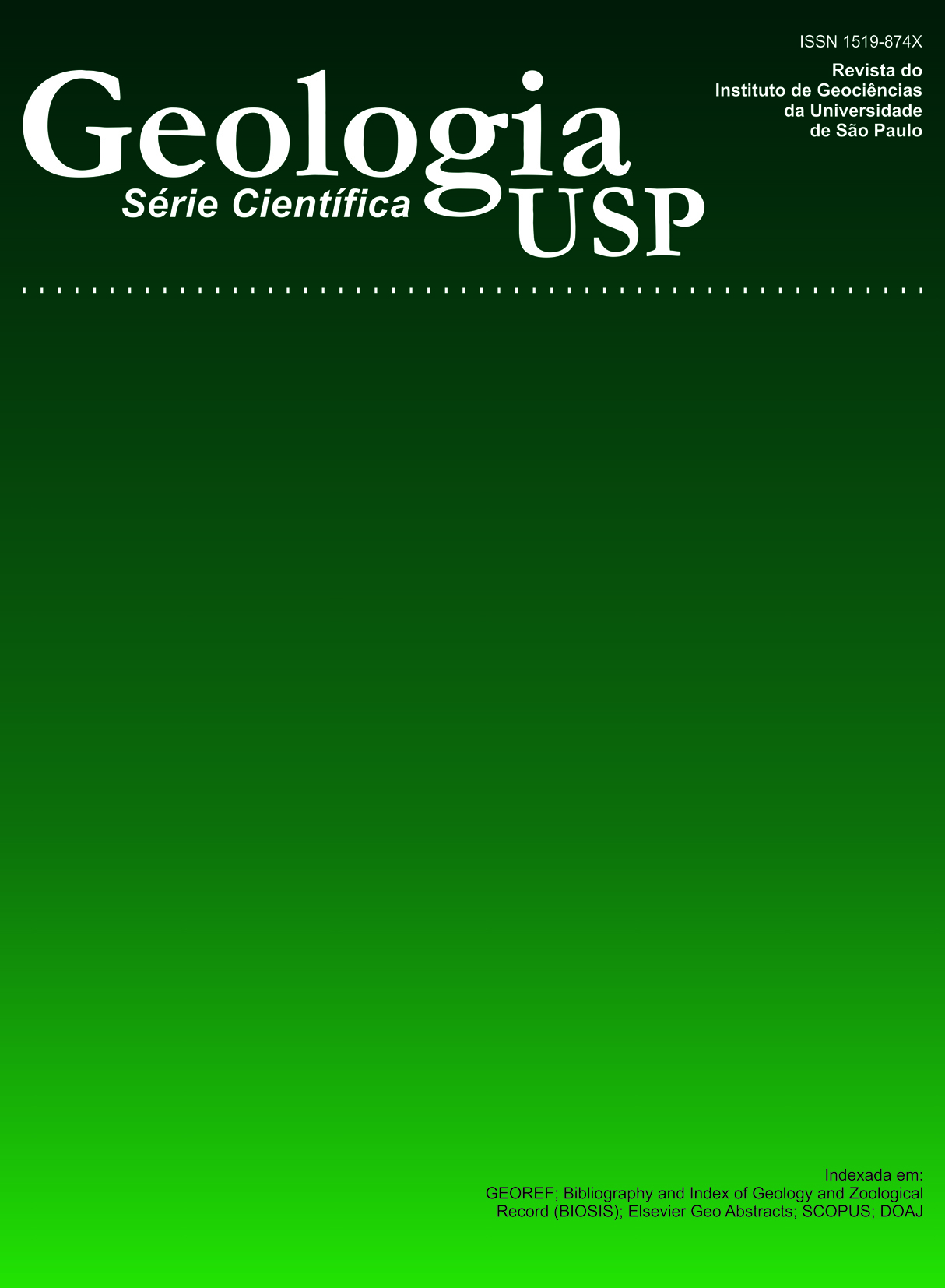Evolução do segmento norte do orógeno Itabuna-Salvador-Curaçá: cronologia da acresção de arcos, colisão continental e escape de terrenos
DOI:
https://doi.org/10.5327/S1519-874x2004000100003Keywords:
geotectonics, orogenic belts, geochronology, Nd isotopesAbstract
U-Pb and Pb-evaporation zircon ages, together with whole-rock Sm-Nd and Pb-Pb data, are used to unravel the tectonic evolution of the northern segment of the Itabuna-Salvador-Curaçá Orogen, northeastern São Francisco Craton. The results of this geochronologic study indicate that oceanic crust and island arc sequences accreted at 3.3 Ga, forming the Mundo Novo Greenstone Belt, and that between 2.2 - 2.12 Ga the Rio Itapicuru and Rio Capim Greenstone Belts were formed in a similar fashion. Age data and Nd isotopes also suggest that Andean-type continental margins are likely to have formed in the span of time 3.08 - 2.98 Ga, giving rise to the TTG belts of Retirolândia and Jacurici river, and to the Caraíba Complex between 2.69 - 2.63 Ga. Around 2109 Ma, continent-continent collision closed the Rio Itapicuru volcano-sedimentary basin, as inferred from the syntectonic emplacement of the Itareru Tonalite between the Rio Itapicuru Greenstone Belt to the east and the banded gneisses of the Serrinha Block to the west. This collision culminated in a major shift from frontal or oblique convergence to orogen-parallel block-escape about 2084 Ma ago and continued at least till 2039 Ma. During this event several elongated granitic and syenitic bodies were emplaced in the continental crust. The Itiúba Syenite, dated at 2084 Ma and stretching over 150 km east of the Caraíba Complex, is an example of one of these intrusive bodies.Downloads
Download data is not yet available.
Downloads
Published
2004-04-01
Issue
Section
Articles
License
Authors who publish in this journal shall comply with the following terms:
- Authors keep their copyright and grant to Geologia USP: Série Científica the right of first publication, with the paper under the Creative Commons BY-NC-SA license (summary of the license: https://creativecommons.org/licenses/by-nc-sa/4.0 | full text of the license: https://creativecommons.org/licenses/by-nc-sa/4.0/legalcode) that allows the non-commercial sharing of the paper and granting the proper copyrights of the first publication in this journal.
- Authors are authorized to take additional contracts separately, for non-exclusive distribution of the version of the paper published in this journal (publish in institutional repository or as a book chapter), granting the proper copyrights of first publication in this journal.
- Authors are allowed and encouraged to publish and distribute their paper online (in institutional repositories or their personal page) at any point before or during the editorial process, since this can generate productive changes as well as increase the impact and citation of the published paper (See The effect of Open Access and downloads on citation impact).
How to Cite
Oliveira, E. P., Carvalho, M. J. de, & McNaughton, N. J. (2004). Evolução do segmento norte do orógeno Itabuna-Salvador-Curaçá: cronologia da acresção de arcos, colisão continental e escape de terrenos . Geologia USP. Série Científica, 4(1), 41-53. https://doi.org/10.5327/S1519-874x2004000100003





